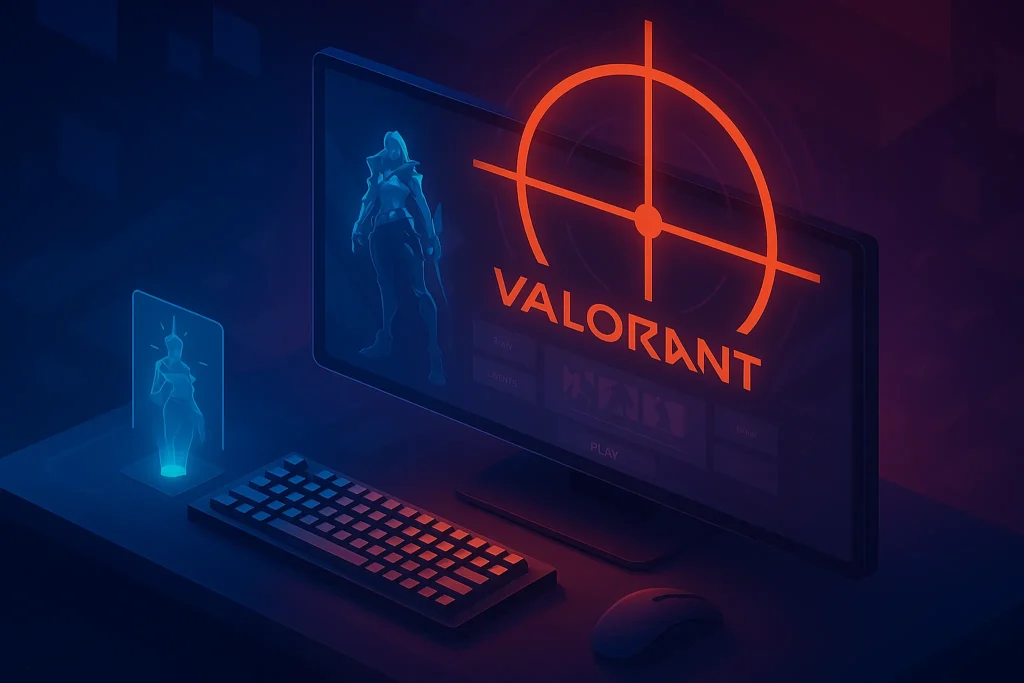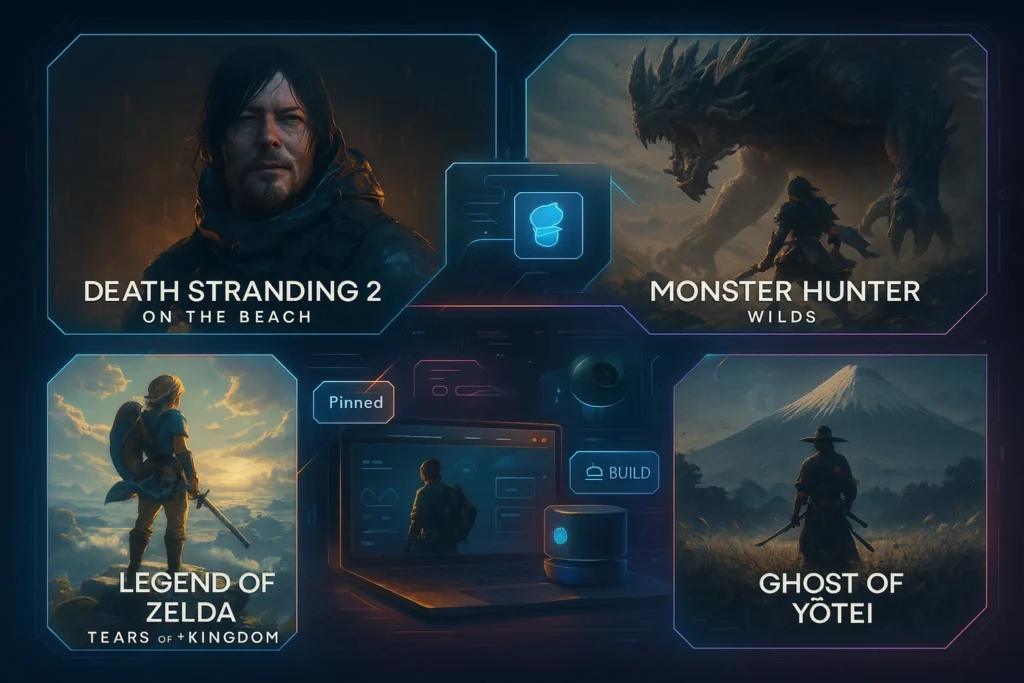🚀 Intro: Why 2025 Is the Best Year to Enter VR on a Budget
Virtual reality is no longer a futuristic luxury reserved for high-end PCs or early adopters with deep wallets. In 2025, the VR market has matured to a point where headsets under $500 deliver immersion levels that were once exclusive to $1000+ rigs. The rise of standalone devices like the Meta Quest line, competitive pricing from Pico, and discount waves hitting PC-tethered options like the HP Reverb G2 have transformed the landscape. For gamers who want to explore immersive titles like Beat Saber or Half-Life: Alyx without breaking the bank, this year feels like the gateway moment.
What makes 2025 so pivotal is not just the price-to-performance curve—it’s the ecosystem. With cloud gaming beginning to integrate VR streaming and accessories getting both cheaper and smarter, the budget barrier has officially crumbled. If you’ve ever thought about stepping into VR but hesitated because of cost, now is the time to reconsider.
💡 Nerd Tip: Don’t wait for the “perfect headset.” Sub-$500 VR gear today is more than capable of providing unforgettable experiences.
🔎 What to Expect from Budget VR Headsets (<$500)
When you hear “budget VR,” you might think about compromise. Yet in 2025, compromises are far less dramatic than they used to be. Sub-$500 headsets now balance solid resolution, wide fields of view, and smooth refresh rates with surprisingly good tracking.
Resolution plays a huge role in how immersive VR feels. Budget devices today often feature 1832×1920 per eye or higher, which is more than enough to reduce screen-door effects that plagued early generations. Refresh rates typically land between 90Hz and 120Hz, striking a sweet spot between fluid visuals and hardware efficiency.
Field of view (FOV) is another dimension of immersion. While premium headsets may push beyond 110–115 degrees, budget VR systems in 2025 hover comfortably around 95–104 degrees. That may sound modest, but in practice, the difference is negligible for most casual and fitness VR gamers.
Tracking is where things get interesting. Most sub-$500 devices lean on inside-out tracking using integrated cameras. This means you don’t need external sensors cluttering your room. For enthusiasts chasing ultra-precise tracking in titles like Half-Life: Alyx, external lighthouse setups still outperform, but inside-out is now robust enough for mainstream users.
In short, if you’re expecting something outdated or janky in the budget range, think again. Today’s VR gear offers strong fundamentals, with only slight concessions compared to flagship headsets.
🎯 Best VR Headsets Under $500 in 2025
Let’s break down the top contenders that deliver immersion without inflating your credit card bill.
🥽 Meta Quest 3 (Entry Bundle)
Meta Quest 3 represents the gold standard for budget-friendly VR in 2025. Priced around $499, the entry bundle offers a standalone experience with a Snapdragon XR2 Gen 2 chip, sharp 2064×2208 resolution per eye, and a 120Hz refresh rate. Gamers get access to Meta’s expansive VR library and fitness apps that rival dedicated hardware. The Quest 3 also works as a tethered PC headset, bridging the best of both worlds.
Pros include wireless freedom, strong app support, and regular software updates. Downsides are modest battery life (around 2.5 hours) and limited FOV compared to high-end models. Still, for under $500, it’s tough to beat the value proposition.
💡 Nerd Tip: Pair your Quest 3 with a third-party head strap and extended battery to double your play sessions.
🥽 Pico 4
The Pico 4 is Meta’s fiercest competitor in the budget VR space. With a lightweight design, pancake lenses, and 4K+ resolution combined with a 105-degree FOV, it delivers sharper visuals than Quest 3 at slightly lower prices in certain regions. The challenge? Content ecosystem. While gaming libraries are expanding, it doesn’t match Meta’s sheer scale. Still, for visual purists who care about clarity and comfort, Pico 4 is a phenomenal buy under $500.
🥽 HP Reverb G2 (Discounted)
Once a premium PC VR headset, the HP Reverb G2 often drops below $400 thanks to 2025 price cuts. Its key strength is ultra-high resolution (2160×2160 per eye), which makes text-heavy games and productivity applications look crisp. It’s less ideal for casual VR since it requires a capable gaming PC and tethering, but if you already own a strong rig and want AAA VR visuals on a budget, the Reverb G2 remains a sleeper hit.
🥽 Refurbished or Older Oculus Units
Don’t underestimate the secondhand market. Refurbished Oculus Quest 2 units regularly sell for under $250, and while they don’t match 2025’s cutting-edge performance, they still run popular games, fitness apps, and social VR platforms. For families, VR-curious beginners, or those who just want to test immersion without big commitments, refurbished models are a smart entry point.
⚡ Performance & Immersion Benchmarks
Performance in VR isn’t just about raw resolution—it’s about how the system handles sustained immersion. Benchmarks in 2025 show Quest 3 and Pico 4 sustaining 90Hz+ refresh rates across demanding titles like Beat Saber, VRChat, and even PC-streamed Half-Life: Alyx.
Comfort is equally critical. Longer sessions (1–2 hours) often reveal pressure points. Quest 3 with the stock strap feels front-heavy, while Pico 4’s balanced design makes it easier on the neck. The HP Reverb G2 delivers crisp visuals but can feel bulky compared to lighter standalone competitors.
Latency is another factor. Standalone devices average 20ms end-to-end latency, which is imperceptible for most casual users. Tethered systems like the Reverb G2 dip lower, making them better suited for competitive or precision-based VR activities.
💡 Nerd Tip: If you’re into VR workouts, consider lighter headsets. Weight distribution impacts both comfort and motion sickness risk. Check our guide on Best VR Games for Fitness and Workout.
🖥️ PC vs. Standalone VR at This Price Point
The $500 mark forces an important decision: standalone versus PC-tethered.
Standalone VR, like the Meta Quest 3 and Pico 4, offers convenience and portability. No cables, no expensive rigs, just pick up and play. This makes them ideal for casual users, fitness enthusiasts, and social VR explorers. However, performance ceiling is limited by mobile-grade chips.
PC VR, represented here by the HP Reverb G2, taps into the full horsepower of desktop GPUs. Visuals are sharper, frame rates more stable in demanding titles, and you can mod games more freely. But tethered VR requires investment in a gaming PC—often doubling or tripling your cost beyond the headset itself.
For many gamers, standalone VR is enough. If you’re chasing premium immersion in AAA VR titles, though, tethered PC setups remain king.
To explore more on how ecosystems shape VR gaming, dive into our coverage of VR Gaming: Best Games and Gear for Immersive Play.
🛠️ Accessories & Add-ons That Improve Experience
Budget doesn’t end at the headset. Accessories can elevate comfort and extend immersion.
Head straps are perhaps the most impactful. Third-party elite straps with built-in battery packs balance weight and double session times. Lens inserts are another essential if you wear glasses, making VR less cumbersome. External battery packs extend play sessions, while VR covers keep headsets hygienic for households with multiple users.
Even small upgrades make big differences. For example, swapping the stock foam pad on a Quest 3 with a breathable cushion can significantly reduce sweating during VR workouts. Pairing a headset with high-quality earbuds or spatial audio accessories also deepens immersion.
💡 Nerd Tip: Accessories often provide more ROI on comfort than upgrading to a pricier headset.
🎮 Alternatives for Budget Immersion
Not all VR immersion has to live in standalone headsets. PlayStation’s PSVR2, while priced slightly above $500 new, often bundles with promotions that dip into budget territory. It leverages the PlayStation 5 ecosystem, making it appealing for console-first gamers.
Cloud VR is another frontier. Services are beginning to stream VR experiences directly, reducing reliance on local hardware. While still early, platforms experimenting with cloud VR show promise for expanding immersive access to cheaper headsets. To understand how this could reshape gaming access, check our deep dive into Cloud Gaming.
🔥 Looking for the Best Value in VR?
If you’re ready to enter VR under $500, the Meta Quest 3 and Pico 4 are your top picks. Both combine affordability with immersive experiences that rival premium rigs.
🔮 Future-Proofing & Upgrade Path
One of the biggest worries when buying budget tech is: “Will it last?” VR headsets under $500 are no exception. Fortunately, 2025 devices like the Meta Quest 3 and Pico 4 are designed with future-proofing in mind.
Meta has a track record of extending software support for years—Quest 2 launched in 2020 and still receives major updates today. That means Quest 3 buyers in 2025 can realistically expect active support through 2028 and beyond. Pico’s commitment is newer, but their aggressive push in Western markets signals a similar roadmap.
Another part of future-proofing is upgrade paths. Both Quest 3 and Pico 4 integrate well with accessories like eye-tracking add-ons, improved head straps, or passthrough AR updates. Meanwhile, PC VR headsets like the HP Reverb G2 might lack frequent firmware updates, but they benefit from your PC’s evolving power. As you upgrade your GPU, the headset’s performance ceiling also rises.
💡 Nerd Tip: Think of VR headsets as part of an ecosystem. A slightly pricier model with longer update support often outlives a “cheaper now, obsolete tomorrow” option.
🌐 Community & Ecosystem
Buying a headset is only step one—the real magic comes from the ecosystem. Budget VR users in 2025 benefit from thriving communities that expand value beyond hardware.
Meta’s Quest ecosystem is a powerhouse. With millions of active users, the App Lab is filled with experimental indie games, fitness apps, and free experiences. Social platforms like VRChat and Horizon Worlds keep growing, ensuring you’ll always find people to interact with. This matters because VR can feel isolating if you don’t have a community to share it with.
Pico’s ecosystem is smaller but growing. Its partnerships with developers in Asia bring unique titles not always available on Meta. PC VR ecosystems, meanwhile, thrive on SteamVR—meaning you get access to decades of modding culture and AAA titles.
For gamers deciding where to invest, ecosystem often outweighs specs. A headset with strong community backing means more content, faster bug fixes, and more innovative add-ons.
📊 ROI for Gamers & Fitness Players
VR is often sold as entertainment, but it’s also an economic decision. Let’s break down real-world ROI:
For fitness fans, VR headsets often replace gym memberships. A Quest 3 with a $15 monthly subscription to apps like Supernatural can deliver guided workouts, cardio, and strength training. Compare that to an average $40–$70 gym membership in many cities, and VR pays for itself within a year.
For gamers, ROI comes from game libraries. With standalone VR, you don’t need a $1500 gaming PC. Spending under $500 on a Quest 3 grants access to hundreds of titles, including fitness, rhythm, RPGs, and productivity apps. When compared to console ecosystems, VR delivers a broader use case per dollar spent.
💡 Nerd Tip: Think of VR not as a “cost” but as a lifestyle investment that blends gaming, health, and socializing—all under one price tag.
🛑 Challenges & How to Solve Them
Even the best budget VR gear has challenges. The good news? Most are solvable.
Motion Sickness remains the number one fear for newcomers. While it’s less common with 90Hz+ refresh rates, some users still feel discomfort. The solution is gradual adaptation—start with short 10-minute sessions, play standing up, and focus on games with stable movement like rhythm titles (Beat Saber) instead of free-locomotion shooters.
Limited Play Space is another issue. Many urban users don’t have a big living room. Fortunately, most headsets feature Guardian Systems that map your safe zone and warn you when you’re close to boundaries. Even a 2×2 meter space can deliver rich VR experiences.
Battery Life is the third challenge. With average sessions capped at 2–3 hours, it feels limiting. External battery packs and head straps with built-in power double playtime. For PC VR, this is less relevant, as tethered headsets draw power directly.
💡 Nerd Tip: Don’t see challenges as deal-breakers. Every limitation has a hack, accessory, or routine to make it manageable.
👤 Case Study: A Real-World VR Transformation
Consider Alex, a 29-year-old software engineer who bought a refurbished Quest 2 in late 2023 for just $250. Initially, he wanted to play VRChat casually. But within six months, VR became his daily workout routine. Using FitXR and Supernatural, he lost 15 pounds and reduced his gym expenses.
By 2025, he upgraded to Quest 3 and started streaming VR gameplay on Twitch, building a small side income. His takeaway? “VR gave me more than games. It gave me a healthier lifestyle, new friends online, and even extra income streams.”
This story mirrors what many budget VR adopters discover: affordable immersion has ripple effects across health, creativity, and career.
🌍 Cross-Genre Potential
One of VR’s most underrated aspects is versatility. Headsets under $500 aren’t just for gaming—they’re multi-purpose portals.
For professionals, VR offers virtual workrooms and meetings. Tools like Immersed allow remote teams to collaborate in virtual offices, complete with whiteboards and multi-monitor setups. For educators, platforms like ENGAGE bring classrooms into VR, letting students explore history, science, and art in ways no textbook can.
Wellness apps are another domain. Meditation apps like Tripp use VR’s sensory immersion to guide users into deeper states of calm. Language learning apps let you practice conversations in simulated real-world settings. And for creators, VR sculpting tools like Tilt Brush make art interactive and three-dimensional.
💡 Nerd Tip: Even if you buy a headset “just for gaming,” you may find yourself using it for work, health, or creativity before long.
📬 Want More Smart VR & Gaming Tips?
Subscribe to our newsletter for weekly breakdowns of the best budget gaming gear, VR tips, and immersive tech insights—straight from NerdChips.
🔐 100% privacy. No noise. Just curated gaming insights from NerdChips.
🧠 Nerd Verdict
Budget VR in 2025 is no longer a compromise—it’s an opportunity. For under $500, you can unlock immersive gaming, fitness routines, and social experiences that rival premium setups from just a few years ago. Headsets like the Meta Quest 3 and Pico 4 show how far the industry has come, while discounted PC options like the HP Reverb G2 prove that premium visuals are within reach for less.
The verdict? If immersion is your goal, don’t wait. VR under $500 is the sweet spot where accessibility meets performance.
❓ FAQ: Nerds Ask, We Answer
💬 Would You Bite?
If VR immersion was finally affordable under $500, would you take the plunge this year—or wait for the next generation?
Crafted by NerdChips for gamers who want premium immersion without premium prices.



